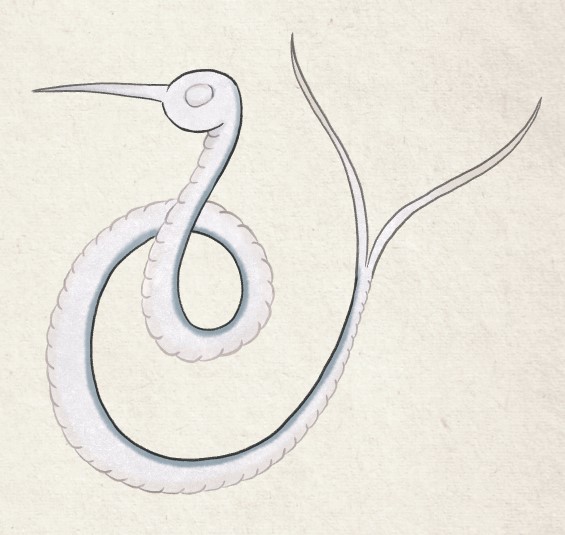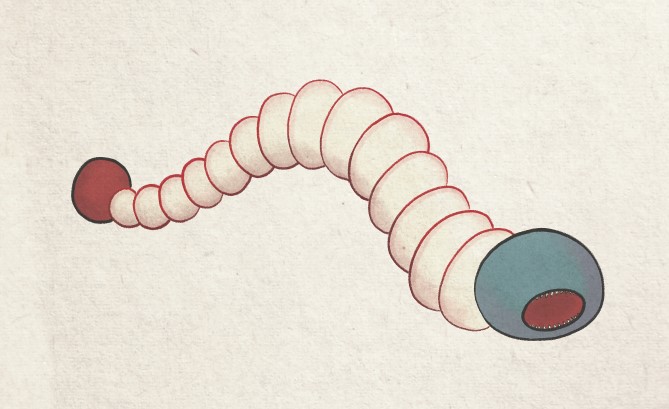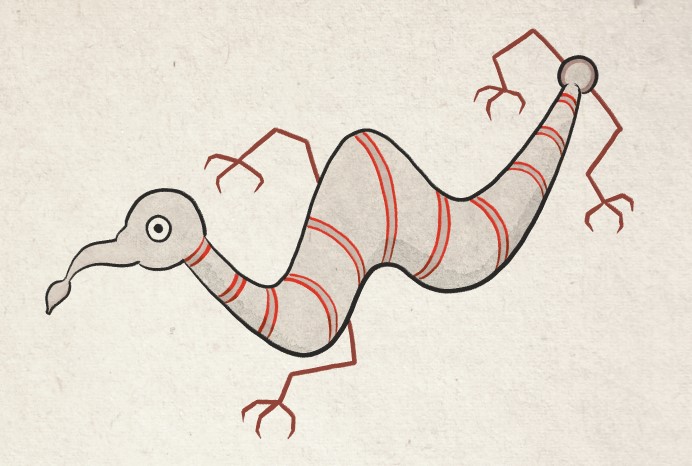If you’d like to join me and many others in painting a yokai a day this month, all you have to do is paint, draw, or create any yokai you like, and share it using the hashtag #ayokaiaday. There’s no set list of yokai you have to paint, but you’re free to browse yokai.com or any other yokai resource and choose your favorites.

Kutsuchi no mushi
クツチの虫
Translation: epilepsy worm
This creepy looking fellow is called kutsuchi no mushi, and it lives in your lungs. It has a bird-like beak on its head and sinister white eyes. Its belly is white and segmented like a snakes, and it has a blueish band running down its back. Its tail is bifurcated.
This mushi causes its host to suddenly lose consciousness, dropping to the floor as if dead. They vomit white foam from their mouths and they cannot be roused. These fits last for two to four hours, after which they regain consciousness. Long ago, this sickness was called kutsuchi.* Today we know it as epilepsy (tenkan in today’s Japanese).
Interestingly, Harikikigaki lists no treatment for this infectious yokai. Presumably no known herbal remedies had any effect on epilepsy.
*Originally kutsuchi meant snoring, but at some point it came to be used as a slang for madness or insanity. The fits these patients suffered were thought to be some form of madness, so the disease came to be called kutsuchi.
If you enjoyed today’s A-Yokai-A-Day entry, please consider becoming a patron and supporting my work by visiting patreon.com/osarusan.






